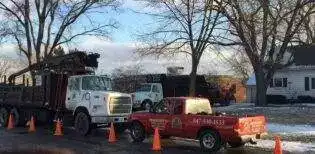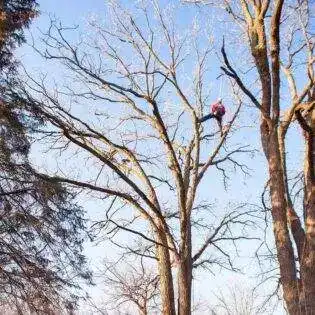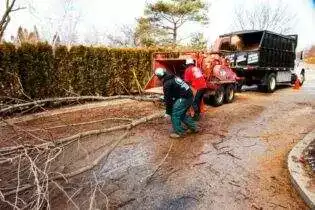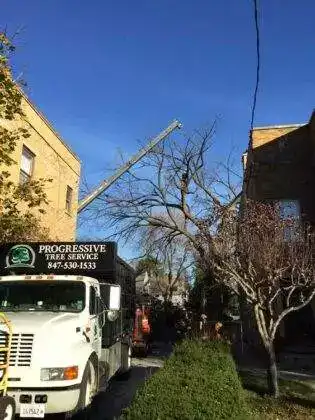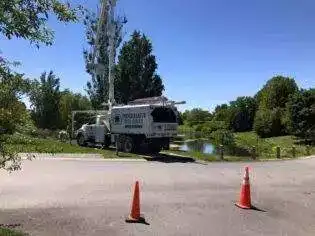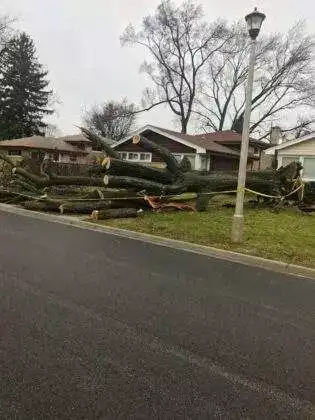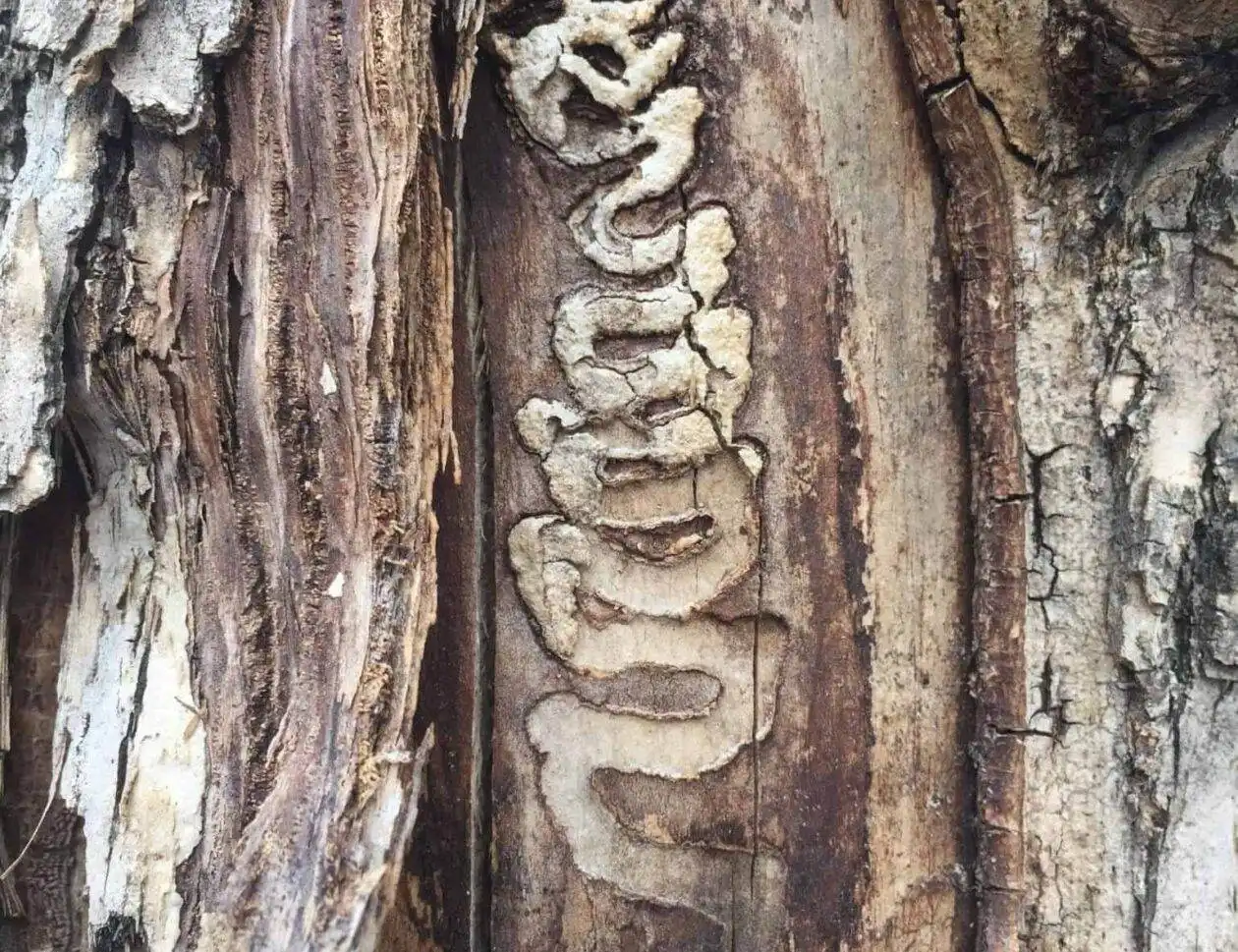Dutch Elm Disease (D.E.D.) Management
Dutch elm disease (DED) is caused by a member of the sac fungi that affects elm trees, and is spread by the elm bark beetle. DED symptoms are the result of a fungus infecting the vascular (water conducting) system of the tree. Infection by the fungus results in clogging of vascular tissues, preventing water movement to the crown and causing many symptoms as the tree wilts and dies.
How Is Dutch Elm Disease Managed?
Dutch Elm Disease (DED) is managed by interfering with the disease cycle. The most effective means of breaking the cycle is by early and thorough sanitation to limit the population of the insects that transmit the fungus from tree to tree. Other means of discontinuing the disease cycle include injecting individual trees with fungicides to prevent or halt the fungus, using insecticides to kill the insect path, breaking root grafts between trees, and pruning out early infections.
Signs and Symptoms of Dutch Elm Disease
The most basic first sign of DED is wilting of leaves that proceed to change colors from healthy green to deteriorating yellow and brown. If the fungus enters the tree through roots that are connected to other infected trees, the symptoms may begin in the lower crown of the tree and on the side nearest the root connection point. When this happens the entire crown may be affected very rapidly. If infection begins in the upper crown, symptoms often first appear at the end of each individual branch, called “flagging”, and progress downward in the crown of the tree. Symptoms of Dutch Elm Disease begin in the late spring or any time during the growing season. However, if the tree was infected the previous year and not detected, symptoms may first be observed in the early spring when leaves begin to appear. Symptoms may progress throughout the whole tree in a single season, or may take two or more years to take full effect.
Another sign of Dutch Elm Disease is dark streaks of discoloration amongst the tree branches. To detect discoloration, cut through and peel off the bark of a dying branch to expose the outer rings of wood. In newly infected branches, brown streaks characteristically appear in the sapwood. If infection occurred in the previous year, the current sapwood may not be discolored, which is why it is important to cut deep into the wood or look at the branch in cross section.
If you suspect that your tree might be affected, please contact Progressive Tree Service for a dutch elm disease inspection.
